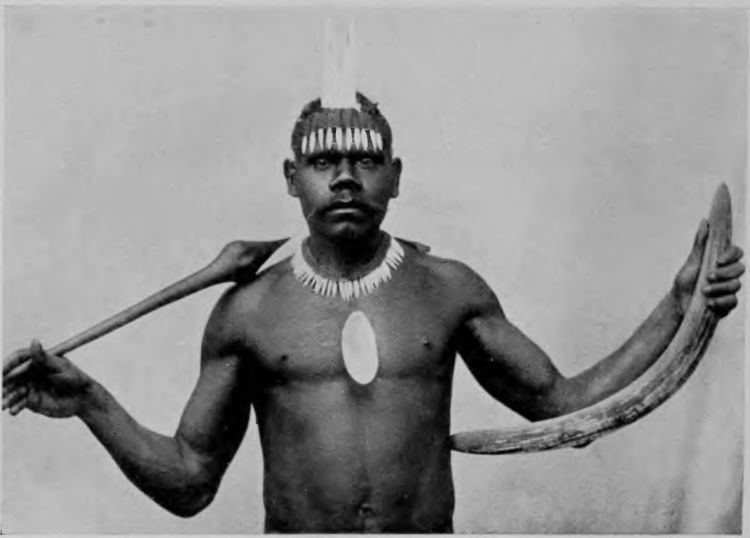 | ||
The Gubbi Gubbi, also written Kabi Kabi, people are an Indigenous Australian people native to southeastern Queensland. They are now classified as one of several Murri language groups in Queensland.
Contents
Language
Gubbi Gubbi was first described by the Reverend William Ridley on the basis of notes taken from an interview with James Davis in 1855, who lived among the Ginginbara clan and called it Dippil, a generic denominator of several tribes speaking similar dialects to the Gubbi Gubbi.
Country
Norman Tindale situated the Gubbi Gubbi as an inland tribe of the Wide Bay–Burnett area, whose lands extended over 3,700 sq. miles and lay west of Maryborough. The northern borders ran as far as Childers and Hervey Bay. On the south, they approached the headwaters of the Mary River and Cooroy. Westwards, they reached as far as the Coast Ranges and Kilkivan. Gubbi Gubbi country is currently located between Pumicestone Road, near Caboolture in the south, through to Childers in the north.
History of contact
Some Gubbi Gubbi died in the mass poisoning of upwards of 60 Aborigines on the Kilcoy run in 1842. A further 50-60 are said to have been killed by food laced with arsenic at Whiteside Station in April 1847. As colonial entrepreneurs pushed into their territory to establish pastoral stations, they together with the Butchulla set up a fierce resistance: from 1847 to 1853, 28 squatters and their shepherds were killed. In June 1849 two youths, the Pegg brothers, were speared on the property while herding sheep. Gregory Blaxland, the 7th son of the eponymous explorer Gregory Blaxland took vengeance, heading a vigilante posse of some 50 squatters and station hands and, at Bingera, ambushed a group of 100 sleeping myalls of the 'Gin gin tribe' who are usually identified now as the Gubbi Gubbi. They had feasted on stolen sheep. Marksmen picked off many, even those fleeing by diving into the Burnett River. The slaughter was extensive, and the bones of many of the dead were uncovered on the site many decades later. Blaxland was in turn killed in a payback action sometime in July–August 1850. His death was revenged in a further large-scaled massacre of tribes in the area.
The escaped convict James Davis lived among other tribes, the Gubbi Gubbi John Mathew, a clergyman turned anthropologist, also spent 5 years with them at Manumbar and mastered their language. He described their society in a 1910 monograph, Two Representative Tribes of Queensland.
Culture and people
The Queensland lungfish was native to Gubbi Gubbi waters and the species fell under a taboo among them, forbidding its consumption. It was known in their language as 'dala'.
Native title
The descendants of the Gubbi Gubbi made a application for native title on the 31 of May in 2013.
